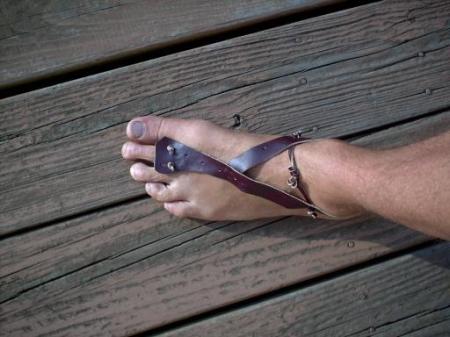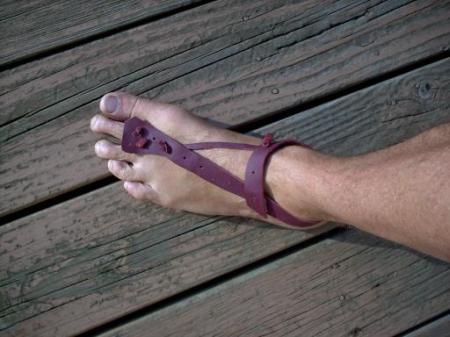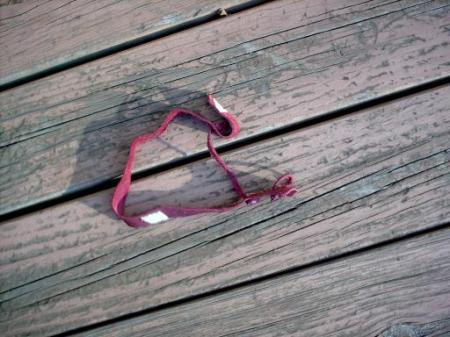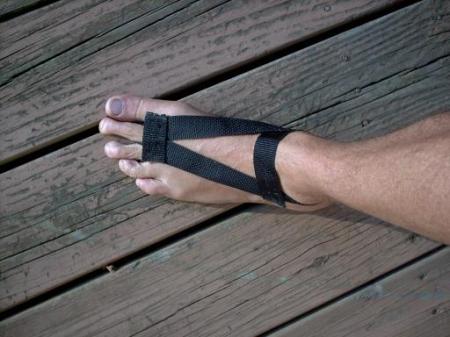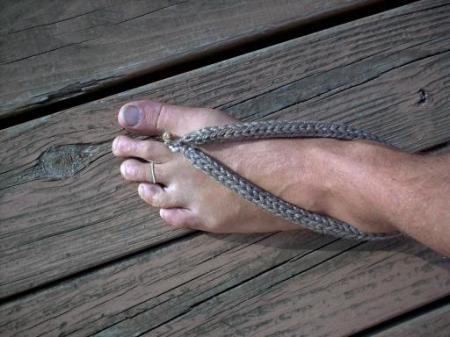Since Daniel Howell was escorted off his plane yesterday for being barefoot, I thought I’d go over the situation for that.
Daniel was flying to NYC to appear on The Today Show to talk about The Barefoot Book. He had actually boarded the plane, and after he had his seat belt on, he was approached and asked if he had any shoes with him. He didn’t, so they tossed him.
Is that legal? Yes, it is. Your airline ticket is basically a contract with a private company, and the terms of that contract are detailed in that airlines “Contract of Carriage.” You can easily use Google to find the contract for any airline you are interested in flying. But it is probably not worth it. Practically every airline has a barefoot rule.
Daniel was flying US Airways, and you can see their Contract of Carriage can be found here (click on the PDF). The relevant section, for any airline, is under the heading “Refusal to Transport”, and for US Airways it says:
US Airways may refuse to transport, or remove from any flight, any passenger for the following reasons: Any passenger who may pose a threat to the comfort and/or safety of other passengers or employees including (but not limited to) passengers who: Are over the age of five (5) and barefoot, or otherwise inappropriately clothed, unless required for medical reasons;
Notice that they say that they may refuse to transport, not that they will, which really makes it a crap shoot depending on the employee who sees you. Also notice that they say the rule is for “comfort and/or safety.” That’s not a crap shoot; that’s just crap. Of course it is more comfortable to be barefoot, and medical experts actually suggest removing your shoes when flying to help keep the blood flowing. Now, maybe they don’t care about your comfort, but thing that the other customers might not be comfortable seeing bare feet. Crap there, too: they don’t ban flip-flops, which show the same amount of foot. And if were really about safety, then there would not be the exception for children under 5 years old, unless the airline wants to go on record saying that they don’t care about the safety of young children. (Think about that!)
It’s all just more mindless following the herd.
The origin of the rule predates the airline deregulation in 1978. Back then, flying was regulated by the Civil Aeronautics Board, and they dictated the Contract of Carriage. That Contract had the barefoot rule (but without the exception for children). After deregulation, most airlines just kept the original Contract, though over the years, many have slowly modified them. (You can see remnants of the CAB rules in that Refusal to Transport is still often called Rule 35.)
Some airlines (a very few) removed the barefoot restriction, Aloha Airlines being one of them. Unfortunately, Aloha ceased operating in 2008. Non-US airlines base their Contracts of Carriage (actually called “General Conditions of Carriage”) on a different model, and generally do NOT have a barefoot clause.
As I said, different airlines have modified the rules, so there are slightly differently worded versions.
Persons who do not meet HA standards for dress and attire: . . . For safety reasons, footwear must be worn unless the passenger is unable to do so due to a disability or physical condition that prevents them from wearing footwear.
Delta may refuse to transport any passenger, and may remove any passenger from its aircraft at any time, for any of the following reasons: Delta may refuse to transport any passenger, or may remove any passenger from its aircraft, when refusal to transport or removal of the passenger is reasonably necessary in Delta’s sole discretion for the passenger’s comfort or safety, for the comfort or safety of other passengers or Delta employees, or for the prevention of damage to the property of Delta or its passengers or employees. By way of example, and without limitation, Delta may refuse to transport or may remove passengers from its aircraft in any of the following situations: When the passenger is barefoot.
AirTran may refuse to transport or may remove from any flight any passenger for one or several reasons, including but not limited to the following: If a passenger’s conduct is disorderly, abusive or violent, or the passenger: Is barefoot, or is clothed in a manner that would cause discomfort or offense to other passengers.
In addition to persons who may be refused transportation on Carrier under Section 6 above, refusal to transport or removal of the following Passengers may be necessary for the comfort and safety of the affected Passenger or other Passengers: Persons over two years of age who are barefoot;
So, how do you fly barefoot? Society for Barefoot Living members have developed a few strategies. Often you can just board barefoot, since the employees are really pretty busy. Don’t look down at your feet, but keep looking directly into the eyes of the employee, particularly when handing over your ticket, and when passing by the flight attendant as you enter the plane. Once you are seated, you are probably fine if they didn’t see you come in, because, as I noted earlier, many people do take off their shoes once they are seated.
However, carry a pair of flip-flops, or something else you can put on for just a moment if challenged. Put them on, pass the person challenging you, and then just take them off again. Yeah, it’s a hassle (I personally hate to have to carry footwear just in case, and rarely do so), but at least then you don’t miss your flight.
One time, on Southwest Airlines, an otherwise very friendly airline, I’d boarded and flown barefoot without being challenged. (They have the “comfort and safety” excuse with an exception for those under 5.) However, on getting off the plane, I was noticed by a flight attendant who went ballistic, telling me I couldn’t be like that. OK, I’m leaving. I think part of his frustration was that there wasn’t a darn thing he could do about me. Hah!
